Explore the breathtaking architectural masterpieces spanning the vast landscapes of America. This journey through 17 iconic structures will reveal the diversity and creativity that define American architecture. From historical landmarks to modern marvels, these wonders capture the imagination and showcase the country’s rich architectural heritage.
Statue of Liberty
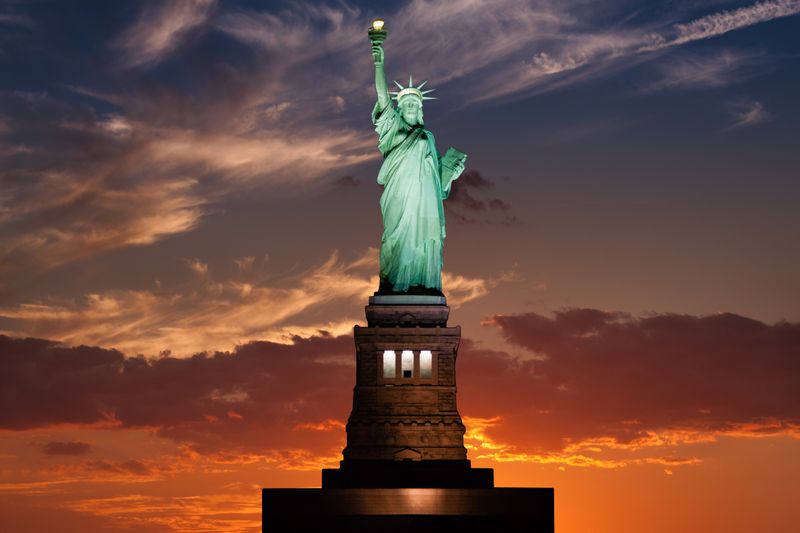
Standing tall in New York Harbor, the Statue of Liberty is an enduring symbol of freedom and democracy. Gifted by France in 1886, it welcomes visitors with its iconic torch and crown. Towering at 305 feet, this colossal neoclassical sculpture is a marvel of engineering and a beacon of hope for immigrants arriving in America.
Designed by Frédéric Auguste Bartholdi and built by Gustave Eiffel, its copper skin has weathered the elements beautifully. The statue’s grandeur and historical significance make it a must-visit landmark. Its presence in the harbor is both reassuring and awe-inspiring.
Climbing to the crown offers breathtaking views of Manhattan, adding to the unforgettable experience.
Golden Gate Bridge

Suspended gracefully over the Golden Gate Strait, the Golden Gate Bridge is an architectural wonder that defines the San Francisco skyline. Completed in 1937, this Art Deco masterpiece is 1.7 miles long and stands as a testament to human ingenuity.
Its international orange hue contrasts beautifully with the azure waters below. The bridge’s elegance is matched only by its engineering excellence. Despite the notorious fog that often envelops it, the bridge remains a symbol of innovation and connection.
Walking or cycling across offers breathtaking views and a sense of being part of something monumental.
Empire State Building
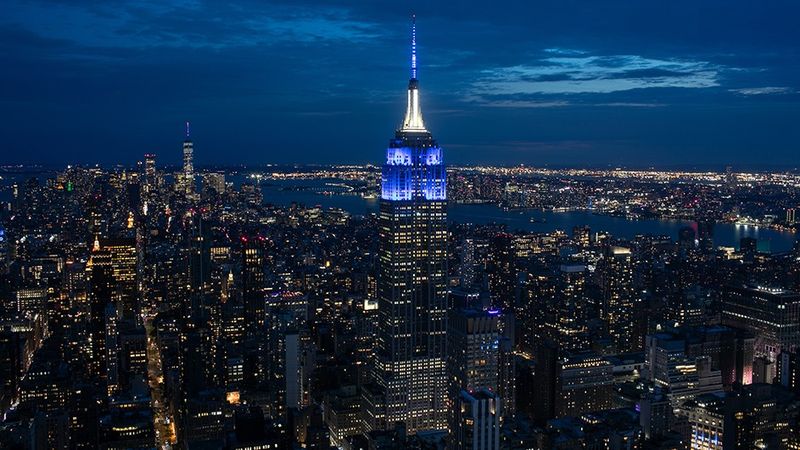
Rising majestically from the heart of Manhattan, the Empire State Building is a beacon of New York’s architectural prowess. Completed in 1931, this Art Deco skyscraper stands 1,454 feet tall, including its antenna.
For decades, it was the tallest building in the world, a title it proudly held until the 1970s. Its observation decks offer panoramic views of the city, attracting millions of visitors annually.
At night, its spire lights up in colors celebrating various events and causes, adding to the city’s vibrant skyline.
Frank Lloyd Wright’s Fallingwater
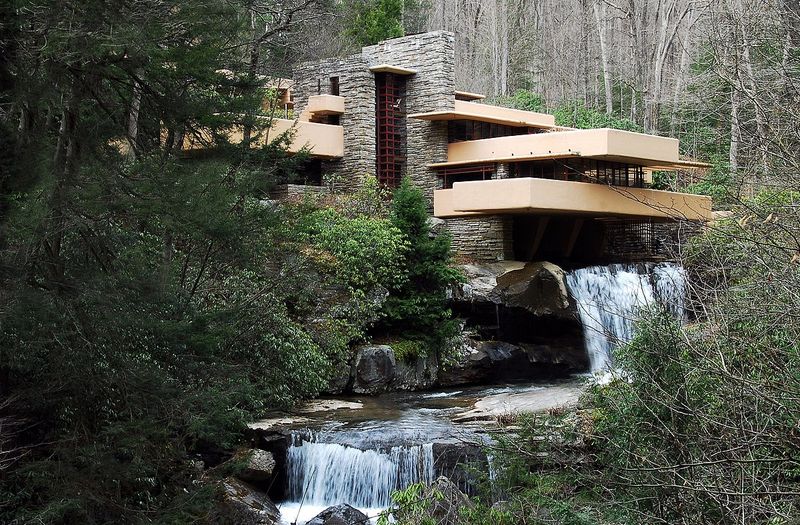
Nestled over a waterfall in the Pennsylvania woods, Fallingwater is a masterpiece of organic architecture by Frank Lloyd Wright. Designed in 1935 for the Kaufmann family, it blends seamlessly with its natural surroundings.
The house’s series of cantilevered terraces appear to float above the water, creating a harmonious balance between architecture and nature. Its innovative design and integration with the environment have earned it recognition as one of the greatest architectural triumphs of the 20th century.
Visitors are captivated by its beauty, history, and the soothing sounds of the waterfall that flows beneath.
Walt Disney Concert Hall
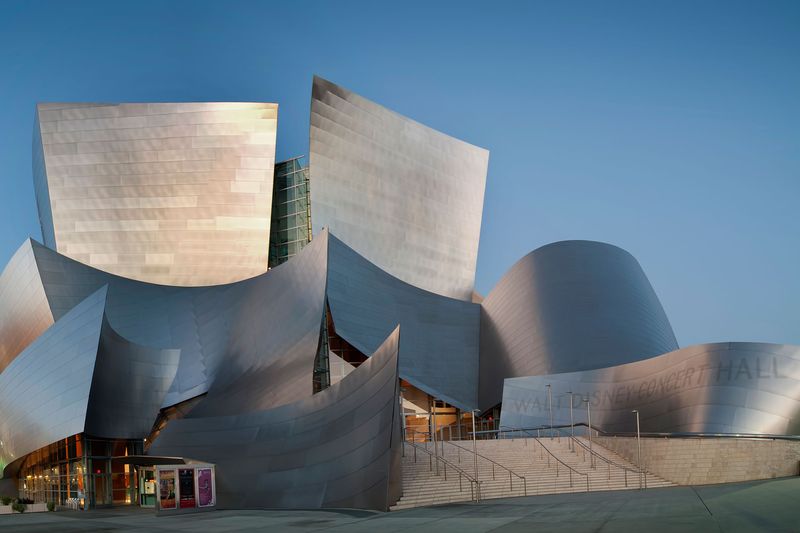
A symphony of curves and angles, the Walt Disney Concert Hall in Los Angeles is a modern architectural gem. Designed by Frank Gehry and completed in 2003, its stainless steel exterior reflects the California sun beautifully.
The hall’s innovative design not only captivates the eye but also enhances acoustics, making it one of the finest concert venues in the world. Inside, a warm and welcoming environment awaits, with wood-lined walls and state-of-the-art sound systems.
The hall stands as a testament to Gehry’s creative genius and Los Angeles’ cultural vibrancy.
Gateway Arch

Soaring 630 feet above the Mississippi River, the Gateway Arch in St. Louis is a symbol of westward expansion and American ingenuity. Completed in 1965, this stainless steel monument is the tallest arch in the world.
Its sleek, modern design by architect Eero Saarinen captures the spirit of exploration and adventure. Visitors can take a tram ride to the top for stunning views of the city and beyond.
This engineering marvel reflects the aspirations of a nation eager to reach new heights, both physically and metaphorically.
The White House
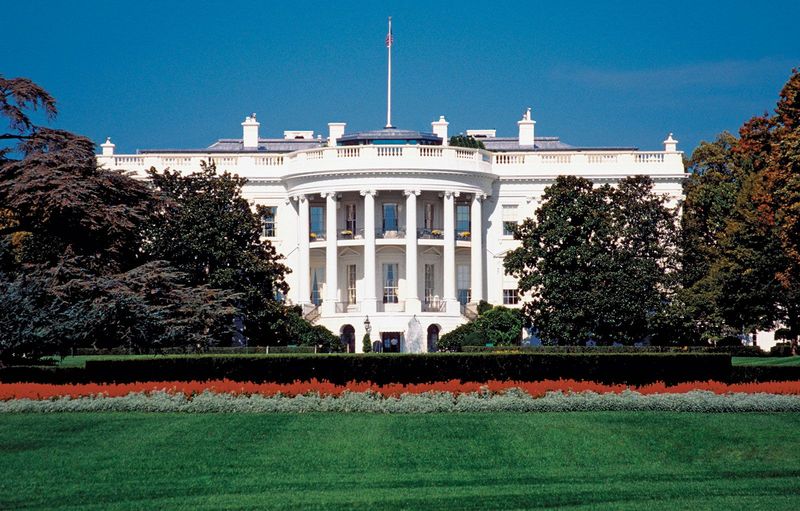
Home to every U.S. president since John Adams, The White House stands as a symbol of American democracy and leadership. Situated in Washington, D.C., its neoclassical design is both grand and inviting.
Constructed in 1792, it has witnessed pivotal moments in history, making it an iconic symbol of the nation. The White House isn’t just a residence; it’s a living museum, open to public tours showcasing its rich history.
Lush gardens and iconic columns add to its stately presence, making it a must-see for visitors to the capital.
Mount Rushmore

Carved into the granite face of the Black Hills in South Dakota, Mount Rushmore is a monumental tribute to four influential U.S. presidents: Washington, Jefferson, Roosevelt, and Lincoln.
Conceived by sculptor Gutzon Borglum, this colossal work symbolizes the birth, growth, and development of the nation. Each face measures 60 feet in height, a testament to the artistic and engineering prowess required to chisel such detail into stone.
The monument attracts millions of visitors annually, drawn by its grandeur and historical significance.
Hoover Dam

Straddling the border between Nevada and Arizona, Hoover Dam is a monumental feat of engineering. Completed in 1935, it stands 726 feet high and 1,244 feet long, holding back the mighty Colorado River.
This concrete arch-gravity dam creates Lake Mead, the largest reservoir in the U.S. by volume. Its construction provided thousands of jobs during the Great Depression, symbolizing hope and resilience.
Today, it remains a testament to human ingenuity, providing water and electricity to millions in the Southwest.
Space Needle
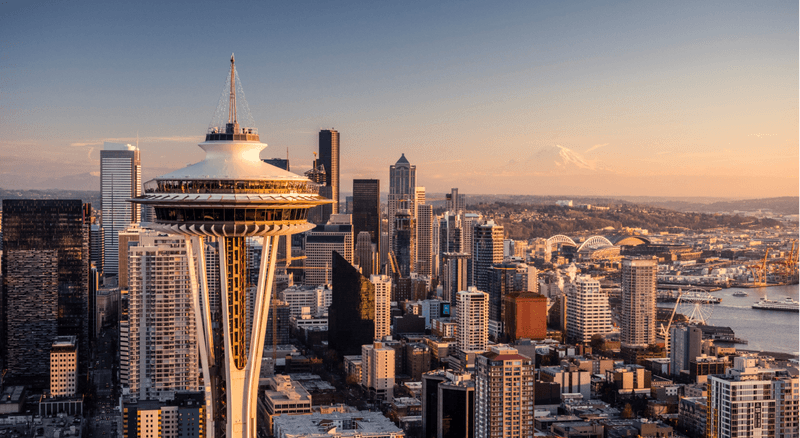
Piercing the Seattle skyline, the Space Needle stands as a testament to the Space Age and the city’s forward-thinking spirit. Constructed for the 1962 World’s Fair, this iconic tower rises 605 feet into the sky.
Its futuristic design and rotating restaurant attract visitors from all over the world. The observation deck offers panoramic views of Seattle, the Puget Sound, and the distant Mount Rainier.
The Space Needle embodies the innovation and ambition that characterize the Pacific Northwest.
Chrysler Building
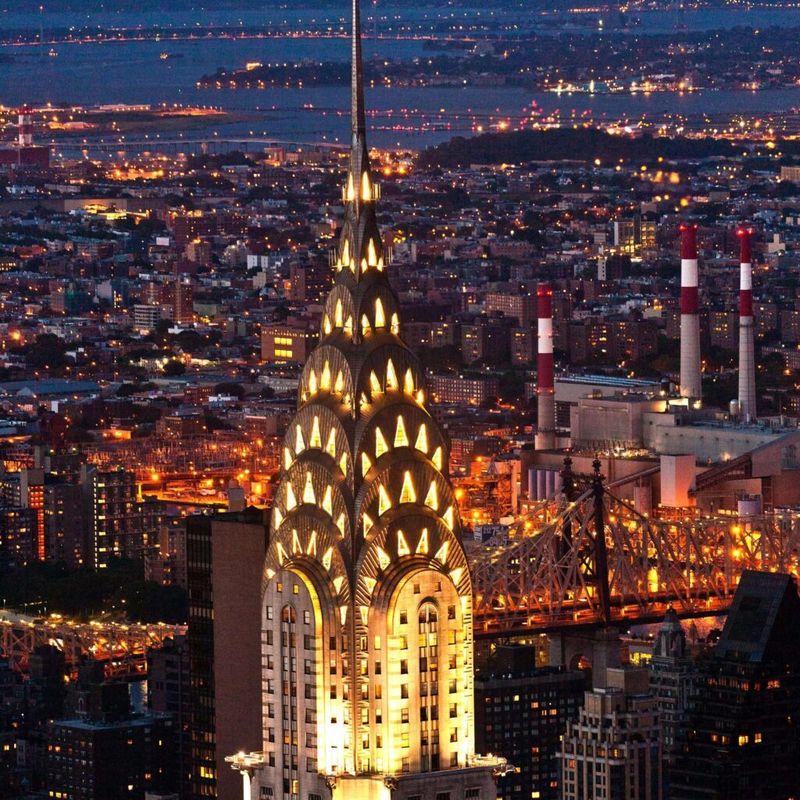
An Art Deco masterpiece, the Chrysler Building is a shining example of 20th-century architectural brilliance. Completed in 1930, it stands 1,046 feet tall, briefly holding the title of the world’s tallest building.
Its gleaming spire and intricate detailing reflect the elegance and optimism of the era. Located in midtown Manhattan, it remains one of New York’s most beloved landmarks.
At night, its illuminated crown is a symbol of the city’s enduring allure and architectural richness.
Sears Tower (Willis Tower)

Dominating the Chicago skyline, the Willis Tower, formerly known as the Sears Tower, is an architectural and engineering marvel. Completed in 1973, it was the world’s tallest building for 25 years.
Standing 1,450 feet tall, its Skydeck offers breathtaking views spanning four states. The tower’s black aluminum and bronze-tinted glass create a sleek silhouette against the sky.
A symbol of Chicago’s vibrant energy and architectural innovation, it remains a must-visit landmark for tourists and locals alike.
Boston Public Library
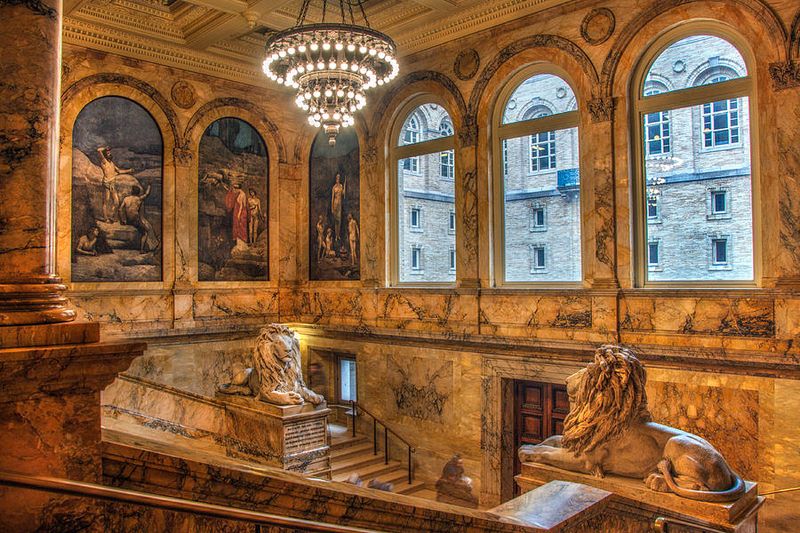
A sanctuary for knowledge and culture, the Boston Public Library is a Renaissance Revival masterpiece. Opened in 1895, it was the first large free municipal library in the United States.
Its grand architecture, featuring marble staircases, murals, and an inviting courtyard, reflects its mission to enlighten and inspire. The library is not just a repository of books but a gathering place for the community.
Visitors are drawn by its historical significance and the beauty of its art and architecture.
Guggenheim Museum
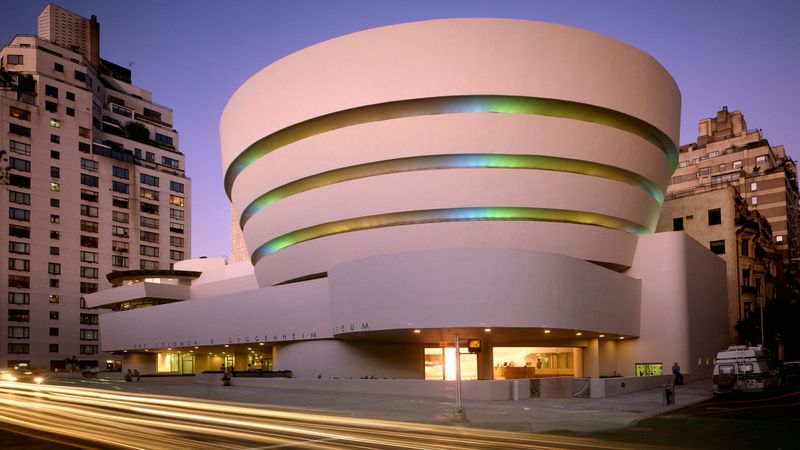
A beacon of modern art and architecture, the Guggenheim Museum in New York City was designed by Frank Lloyd Wright and opened in 1959. Its unique spiraling design defies architectural norms, offering a dynamic space for displaying art.
The museum’s innovative structure allows visitors to view exhibitions in a continuous flow, enhancing the experience of art appreciation. Its stark white exterior and distinctive form are instantly recognizable.
The Guggenheim stands as a testament to creativity and the transformative power of art and design.
Biltmore Estate

Nestled in the serene landscapes of Asheville, North Carolina, the Biltmore Estate is a testament to Gilded Age opulence and craftsmanship. Built by George Washington Vanderbilt II in the late 19th century, this French Renaissance chateau is America’s largest privately-owned home.
With 250 rooms, including luxurious bedrooms, grand dining halls, and a stunning library, the estate reflects Vanderbilt’s love for art and culture. The meticulously landscaped gardens and breathtaking mountain views add to its grandeur.
Visitors are transported to a bygone era of elegance and sophistication.
Hearst Castle
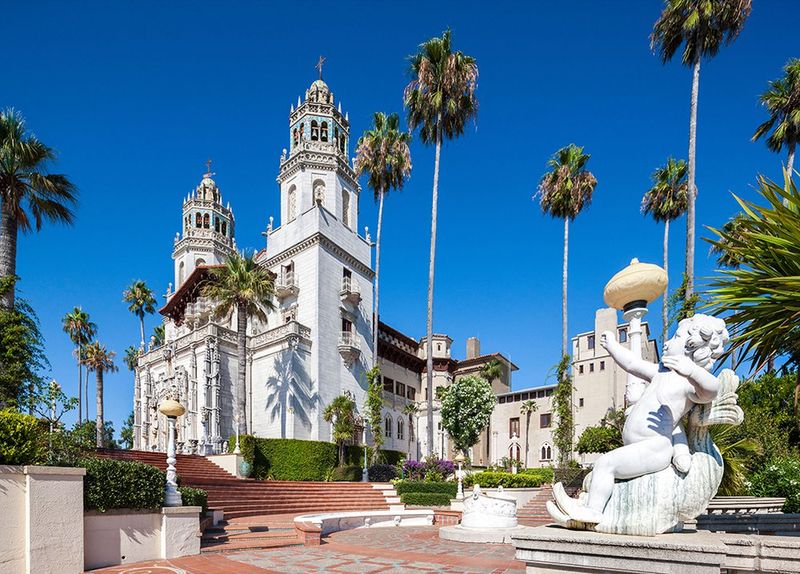
Perched atop the hills of San Simeon, California, Hearst Castle is a monument to the extravagant lifestyle of newspaper magnate William Randolph Hearst. Designed by Julia Morgan, this sprawling estate was completed in the early 20th century.
With 165 rooms and 127 acres of gardens, terraces, pools, and walkways, it epitomizes opulence and grandeur. The estate’s art collection rivals those of the world’s great museums, adding to its allure.
Hearst Castle is a glimpse into a world of luxury, art, and architectural splendor.
St. Louis Cathedral
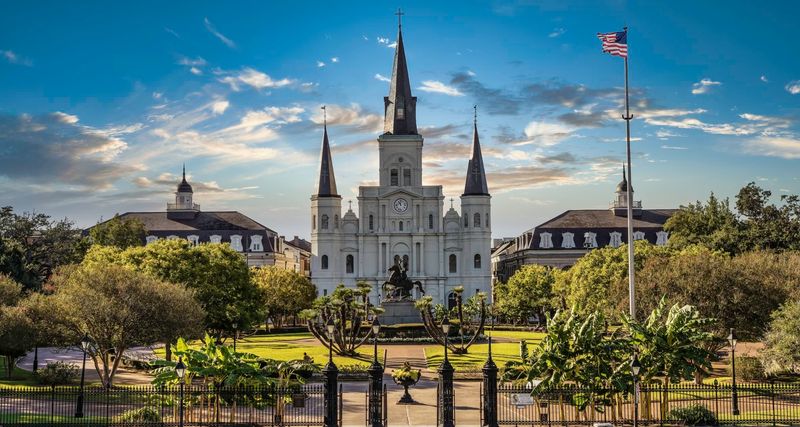
Towering over Jackson Square in New Orleans, the St. Louis Cathedral is the oldest continuously active Roman Catholic cathedral in the United States. Its stunning architecture and rich history make it a focal point of the French Quarter.
Built in 1794, the cathedral’s triple steeples and exquisite interior captivate visitors and worshippers alike. The blend of Gothic and Renaissance styles reflects the city’s diverse cultural heritage.
As a symbol of faith and resilience, the cathedral stands as a testament to New Orleans’ vibrant spirit and historical depth.



